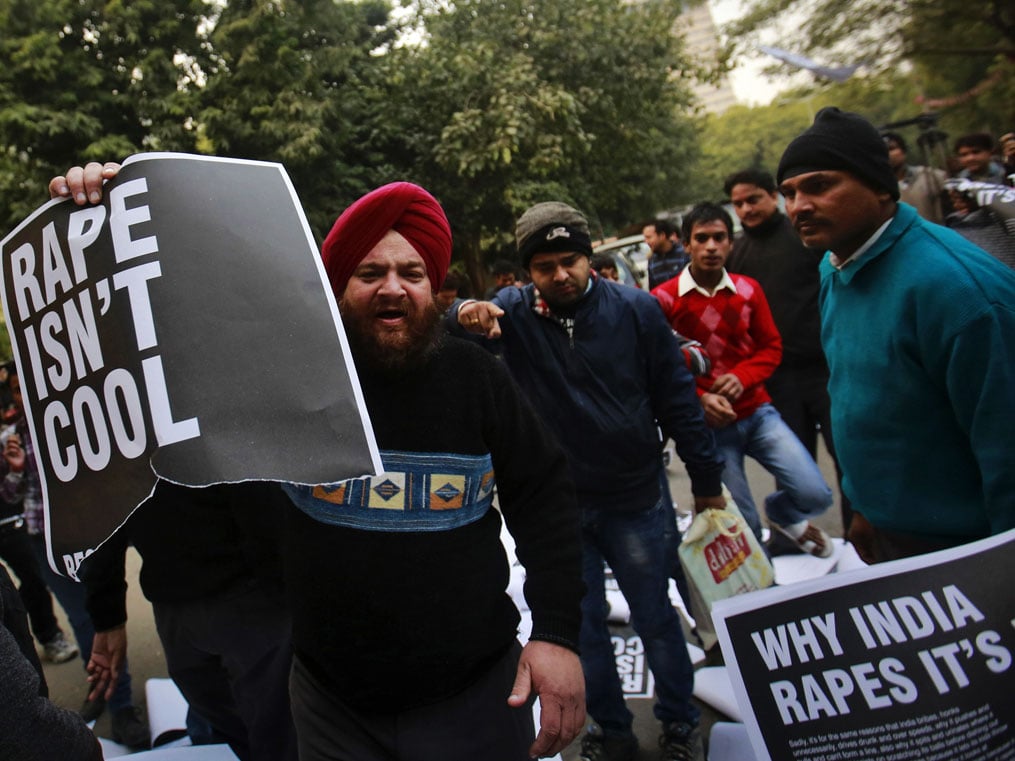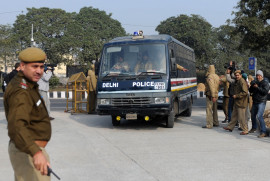
NEW DELHI: While the gang-rape of a student in New Delhi has prompted women in cities to assert their rights to freedom and safety, in India's male-dominated villages many leaders see things differently.
In one of many such cases, the village council of Khedar in Haryana state decided at the weekend to ban "vulgar songs" at weddings, prohibit women from wearing jeans and T-shirts, and stop girls from carrying mobile phones to school.
"The village heads met on Sunday because they were shocked with what happened in Delhi. If a gang-rape can happen in Delhi, it can happen in our village too," village head Shamsher Singh told AFP by telephone.
"In cities, girls are free to wear anything they want, but our village is a small place and if one girl starts wearing Western clothes then every girl wants to do the same."
The move reflects the schism in India between the urban – where women have more freedom to choose, marry and work – and deeply traditional and patriarchal village life where independence hero Mahatma Gandhi said the "soul of India" lay.
The reaction in Khedar and other villages, where 800 million of India's 1.2-billion population live, also casts doubt on a growing narrative that the Delhi gang-rape represents a turning point in the country's attitude to women.
For many, the incident has simply redoubled their belief that the root of the problem lies in modern influences or "Westernisation" – which means "provocative" clothes, sexually explicit music and assertive women.
The dead victim in New Delhi, who was gang-raped and violated with an iron bar before being dumped naked by a road side, had been out to watch a Hollywood film at a shopping mall and was returning home after dark with her boyfriend.
"Where 'Bharat' (a term for traditional India) becomes 'India' with the influence of Western culture, these type of incidents happen," the leader of India's biggest grassroots Hindu group was quoted as saying last week.
"The actual Indian values and culture should be established at every stratum of society where women are treated as 'mother'," Mohan Bhagwat, head of Rashtriya Swayamsevak Sangh (RSS), told a meeting in northeastern India.
A senior ruling party figure, Digvijay Singh, accused the RSS of "wanting to take us back to the 18th century," but the comments were far from isolated and reflect the views of many village leaders and mainstream politicians.
A female cabinet member in the state government of Madhya Pradesh said women who crossed "moral limits" deserved to be punished, while a lawmaker in the state of Rajasthan suggested banning skirts in schools.
The president's son, a ruling party lawmaker, dismissed protesters demanding protection from the police and freedom from daily sexual harassment as "painted" women whom he derided as wanting to spark a "pink revolution".
Reicha Tanwar, the director of the Women's Studies Research Centre in Haryana, says attitudes in rural India, particularly in the most populous northern belt of states, were "going backwards" as a result of the Delhi gang-rape case.
"They are tightening the reins on girls, that they should not go out, they should not travel alone, that they should not ride on bicycles, or be given mobile phones or be seen talking to boys," she told AFP.
Whatever notions village leaders had previously about women's security – often simply that they were to blame for crimes committed against them – "these have been reinforced", she added.
Village councils and "khap panchayats" – separate informal councils composed of elders – exert enormous influence over rural life, particularly in northern India, often issuing regressive diktats derided as "Taliban-like" by activists.
A law intended to make women more influential by reserving them a third of council seats has been a success in some cases, but often simply results in the wives of former members standing as fronts for their husbands.
Despite the claims that the freer mixing of the sexes in cities and fewer social strictures somehow leads to more crime, the only statistics available point to the opposite conclusion.
The National Crime Records Bureau shows that 2,579 rape cases were lodged in the 53 biggest Indian cities in 2011 out of a total of 24,206 cases, meaning roughly only one in ten were in urban areas.
Activists warn these statistics are a gross under-representation and the difficulty of reporting sex crime is even more acute in rural areas where social stigma in small communities is severe.
Whether or not the Delhi gang-rape case makes much difference to India's women in the short-term, urbanisation is likely to bring huge changes in the years ahead.
The UN's 2011 World Urbanisation Prospects report sees India's urban population growing 28 percent from its current level of 377 million to 483 million by 2020. By 2030, it will have grown 60 percent to 606 million.
COMMENTS (2)
Comments are moderated and generally will be posted if they are on-topic and not abusive.
For more information, please see our Comments FAQ























































"The UN’s 2011 World Urbanisation Prospects report sees India’s urban population growing 28 percent from its current level of 377 million to 483 million by 2020. By 2030, it will have grown 60 percent to 606 million."
It seems that the population of India will not increase till 2030 and it will remain 1 billion and only its urban population will increase, Please give the facts correctly.
Actually Indian culture is quite apparent in songs like "Munni Badnaam Hui" and "Sheila Ki jawani". Go in the past and you can find songs like "Choli Kay peechay Kia hai" or "chuma chuma dey dey".